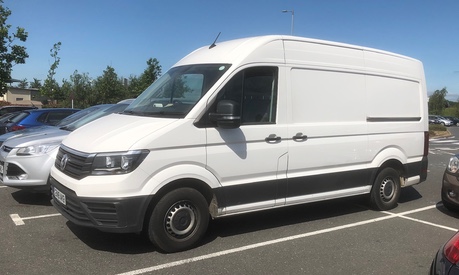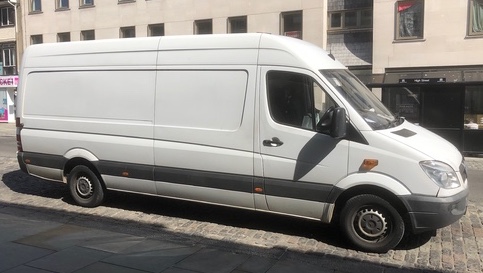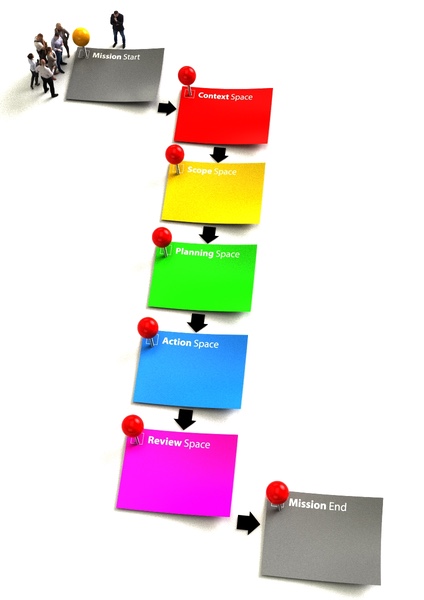EA in miniature – Part 1: Introduction
One of the core themes of my work is that enterprise-architecture principles and practices should apply in essentially the same way for every type of content or context, at every scope and scale. I’ve often written about EA at the very large scale – ‘Really-Big-Picture Enterprise-Architecture‘. But what about the very small scale? – right down to the enterprise-architecture for a one-person organisation? That’s what we’ll explore here in this brief four-part series of posts.
(See also the companion video for this post: ‘Enterprise architecture in miniature – 1: Introduction – Episode 80, Tetradian on Architectures‘.)
— What’s the focus?
How do we make enterprise-architecture more accessible and usable for everyone, even down to the very small scale? How do we apply enterprise-architecture to itself? That’s been a key focus for me, for many years now.
Yet since it’s clear now that most of so-called mainstream ‘enterprise’-architecture has little interest in joining the party on this, how about going out and finding the real-world contexts where there is genuine interest, genuine need? Sounds a worthwhile thing to do, right?
In which case, put my money and more where my mouth is: go out and do it.
Make a real, viable, business out of making real, viable business and more, within a fast-changing world – especially one where the real drivers for change are much more ‘bottom-up’ than ‘top-down’.
Enterprise-architecture in miniature, for enterprise-architecture in miniature, taking enterprise-architecture out on the road, to wherever people need enterprise-architecture.
Spread the word on whole-enterprise architecture. Make the whole thing a demonstrator of those principles and methods.Show how to guide even the most complex of changes with simple tools linked together in easily-understandable ways. Show how architecture connects to real-design, real-world operations. Travel, research, engage; document in text, video, voice and more. Test, evaluate and improve the techniques in real-world practice. Make it real, for everyone.
We each choose our enterprise – the enterprise to which we choose to align, for our work-focus and more. For now, that’s mine.
Put it into practice.
— Where to start?
For me, the very first action is to get a quick overview. There’s a tool called SCORE that can help with that: a quick check of Strengths, Challenges, Options, real-world Responses, and factors for Effectiveness. What this shows me is that most of this is how I already engage in the enterprise of whole-enterprise architecture: the only bit that’s significantly different is that I’ll be travelling around, to go to places where we could apply that kind of enterprise-architecture.
And to do that, I’ll need some means to travel around – and not just travel around, but also do the work itself.
The usual consultancy approach is to fly everywhere, and stay in hotels – but that’s only feasible for larger clients, whereas the aim here is to address the needs of much smaller organisations. And the sheer amount of stuff I’ll need to carry around kinda pushes the limits of what’s feasible for air-travel anyway. Hmm…
Maybe some kind of ‘mobile-home’? – what the US folks call an ‘RV’, recreational-vehicle? That’d do the travel bit all right. But none of the ones I’ve seen would be much good for the work side of this enterprise.
Kinda pushes me towards thinking it through right from scratch – designing something purpose-built for the job.
Start from the ubiquitous white panel-van, perhaps? A ‘medium-wheelbase’ type?
Or maybe the slightly larger ‘long-wheelbase’ type – more space, but perhaps less easy to drive?
Either way, there are very real constraints that I’ll have to address. For example, I only have a standard driving-licence, so in most countries that’ll limit me to a vehicle of not much more than about three tonnes gross-weight.
Which means a total payload probably not much more than a tonne – all of the fit-out and everything else.
All to fit into a space of around six to seven square-metres, 60-80 square-feet – which is tiny.
Into which I have to fit a wide range of distinct uses – write, record, edit, engage, travel, cook, eat, sleep, rest, play and more.
And into which I have to fit and store a vast amount of stuff – everything I need to support each of those uses.
All of which has to work together, to support the whole.
And the vehicle itself is still only one aspect of this overall organisation, in context of its intended enterprise. Of course it’s important – it’s a key enabler, and the enterprise won’t work without it. But it’s not the enterprise itself: that distinction is crucially important!
Whole-enterprise architecture is always about the whole – the whole-as-whole.
— Where does IT fit into this?
But wait a minute, you might ask, what about IT? Isn’t enterprise-architecture mostly about IT?
The short-answer is yes, there is a fair bit of IT in this enterprise-story. Communications, controllers for solar and suchlike, apps for writing, video, editing and more, and a fair few sensors, too, for security, safety and more. But as with the vehicle, yes, the IT is important, and yes, it’s often a key enabler for key parts of the story – but it’s only one side of the story. There’s a bigger picture here – and we should never forget that. Placing all of the focus on something that’s merely one small part of the story not only misses the whole point of whole-enterprise architecture, but can often place the enterprise itself at risk. Not A Good Idea…
In short, yes, IT will come into this picture, eventually – don’t worry about that. But it’s not particularly central to this, and in any case it’s not where we should start. Where we do start is what I’ve done here so far: we start with the story – and build outward (or inward?) from there.
— What happens next?
What I’ve done in this post is explore a quick overview – the thinnest of sketches, really, with no real detail at all. To go further, we need to be methodical about it. The method I most often use for whole-enterprise architectures, of any kind, is that described in the post-series on ‘Towards a whole-enterprise standard‘ – particularly the section on method, as described in that series in detail or in simplified form. The process for the method is iterative, starting with purpose, the ‘Why’ for the architecture, working through the uncertainties, and settling out to plans for action, and then review to identify learnings from what’s been done, before looping round for the next iteration.
Since those posts came out a few years back, we’ve updated the method to a new, further-simplified, version, called Change-mapping. We’re still getting it ready for publication, but the core of it is a simple structure for a ‘mission’, as a wrapper around a set of distinct phases – Context, Scope, Plan, Action and Review:
In terms of that graphic, we’ve set out the current ‘mission’: identify what’s needed to make this enterprise work.
The next step, then, is to move on to the Context phase: get clear about the details for the chosen enterprise, and the organisation’s intended engagement with it – and then move towards scopes for action to make it happen.
That’s what we’ll explore in the next post in this series. See you there!



Tom, thanks for sharing your initiative, thoughts on the how-to.
I’been pondering about the mobile EA small -and- large scale for a while and started materializing the elements since 2012 (in part time). Part of that is having patented a flexible-sized container/ workoffice …. The idea is to have a Nomad team on-site backed up with a per-stage-composed remote team.
Starting this year I went full-time, positioning my Enterprise Architecture skills in (primarily) big firms (keep the income flow) and further experiment with flex-team setup/ selection/ reward-mechanism and other challenges to get things realized with scale.
I think it’s good to keep in touch and share some ideas. In any case I’d be interested in your pondering and progress. Let’s see where this leads.
Note: I live in the Netherlands, which is currently also my main ‘market’. My site reflects my EA work and currently only hints to the Nomad, AdaptCamp ‘adventures’ ..in Dutch
Very interesting indeed, Gerard – many thanks for this!
I, uh, hope I don’t clash with your patent? – we’ll be able to check on that as we get further into this series of posts, anyway. I’m not intending to patent anything – Creative Commons is more my style – but I acknowledge that I do need to respect any prior-art in this space.
In any case, yes, please, let’s keep in touch!
Tom, don’t worry about my patent for now. My emphasis was on the idea that a ‘removable, extendable workplace’ with facilities for remote-team support, could be a mechanism to use when going out ‘in the field’ to serve SME and large companies alike. The Nomad work office(s) could serve individuals a/o larger teams in a mix of on-site and remote. I believe such a setup would be more preferable than aiming at one individual’s RV-like presence.
My ‘AdaptCamp’ setup is in prototype-stage, and I have yet to commercialise the product. I’m initially targeting the City Logistics market.
There’s a short animated movie on it, that might be interesting: https://www.dropbox.com/s/veshyqxh79duqoy/AdaptCamp-Final-V3.1-H.264.mov?dl=0
But, back to EA on your sequence of Mission->Context-> , I’m in favour of a mechanism that I’ve developed at Hewlett Packard, when they took in Compaq and needed to align their strategies and consultant training in an integrated ‘Practice’.
1) Using Groove’s “Strategic Visioning Workshop” in a few management sessions brings out the the Vision, Mission, Strategy, SWOT, …., and Business Principles towards initiatives. (and more…)
2) Extend the working principles from Business -> Information (functions) -> Technology (IT & Org) -> Services (Operations, ROI, increments) — the BITS
3) As an Architect does…. model this into a roadmap that is supported — Reference Architectures … leading to actionable Solution/ IT Architectures, with feedback
4) Setup processes to keep the intentions aligned, and the principles challenged so they are refined/ reconsidered…. be iterative….
I’ve presented such also to the CIO of ING (Banking) Corporate IT as EA= ∫ SA.RA
(integral result over a series of Solution Architectures-times validated against Reference Architectures). It make a constant refinement of the ‘principles’, and via an expert-group/ Architecture board, the needed adjustments can be enforced over a project to meet the principles….. or the rationale for exception can be described.
—
Your article has triggered me to setup a few articles myself for further positioning of my 4Draan.nl website.
—
Interesting to exchange ideas, keep up the good work.
See also
https://www.researchgate.net/publication/221643943_Enterprise_Architecture_for_Small_and_Medium_Enterprise_Growth